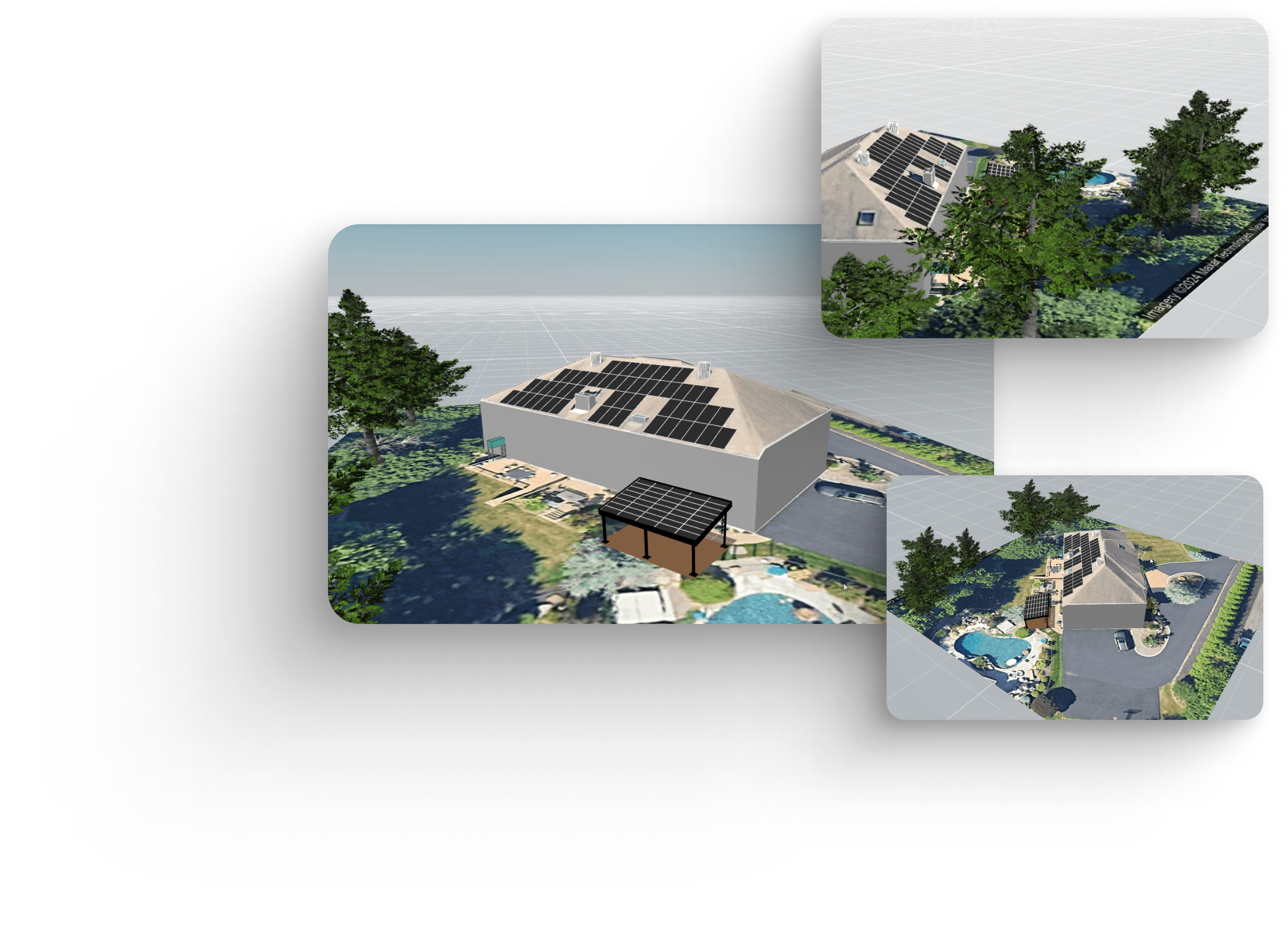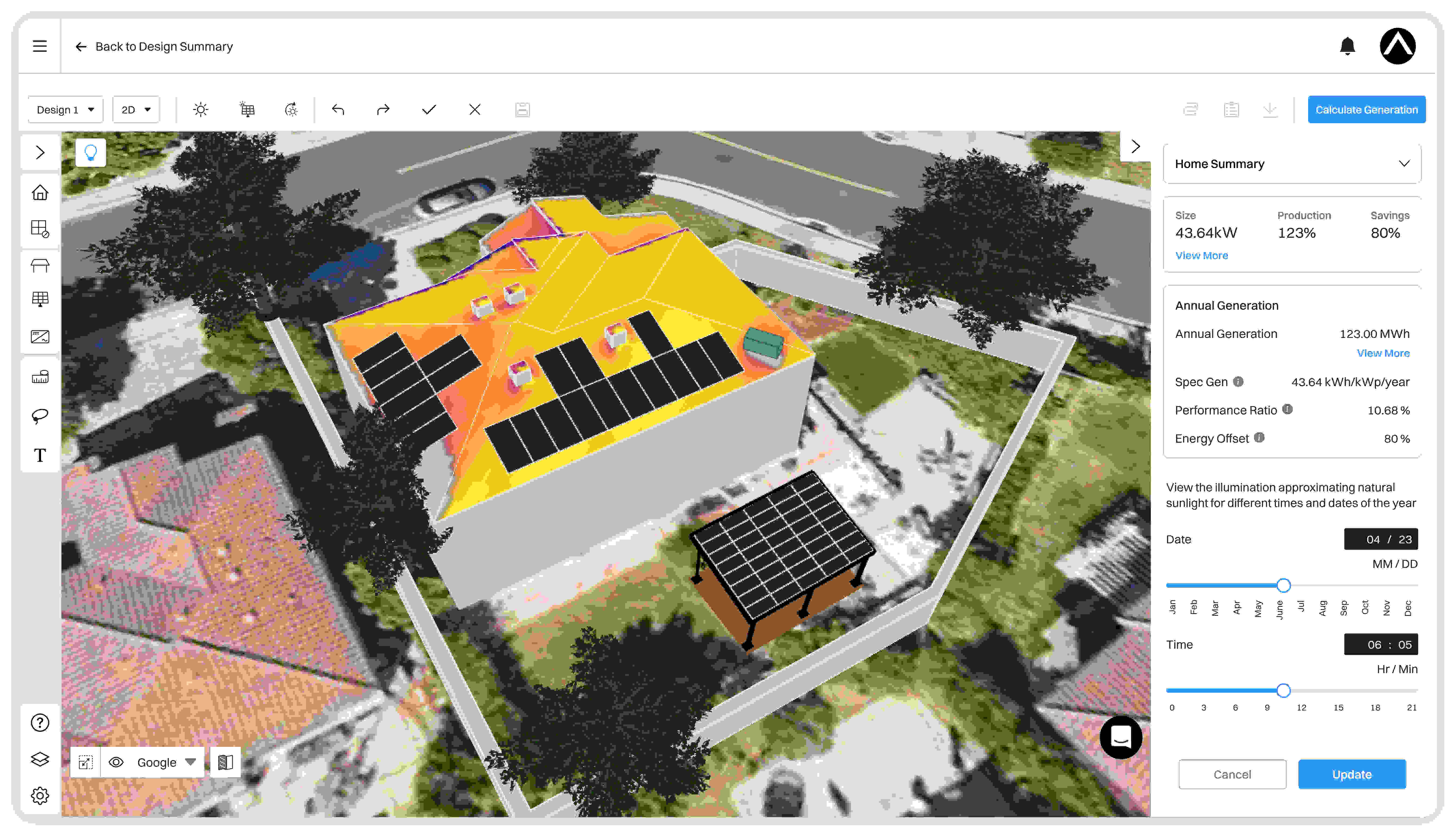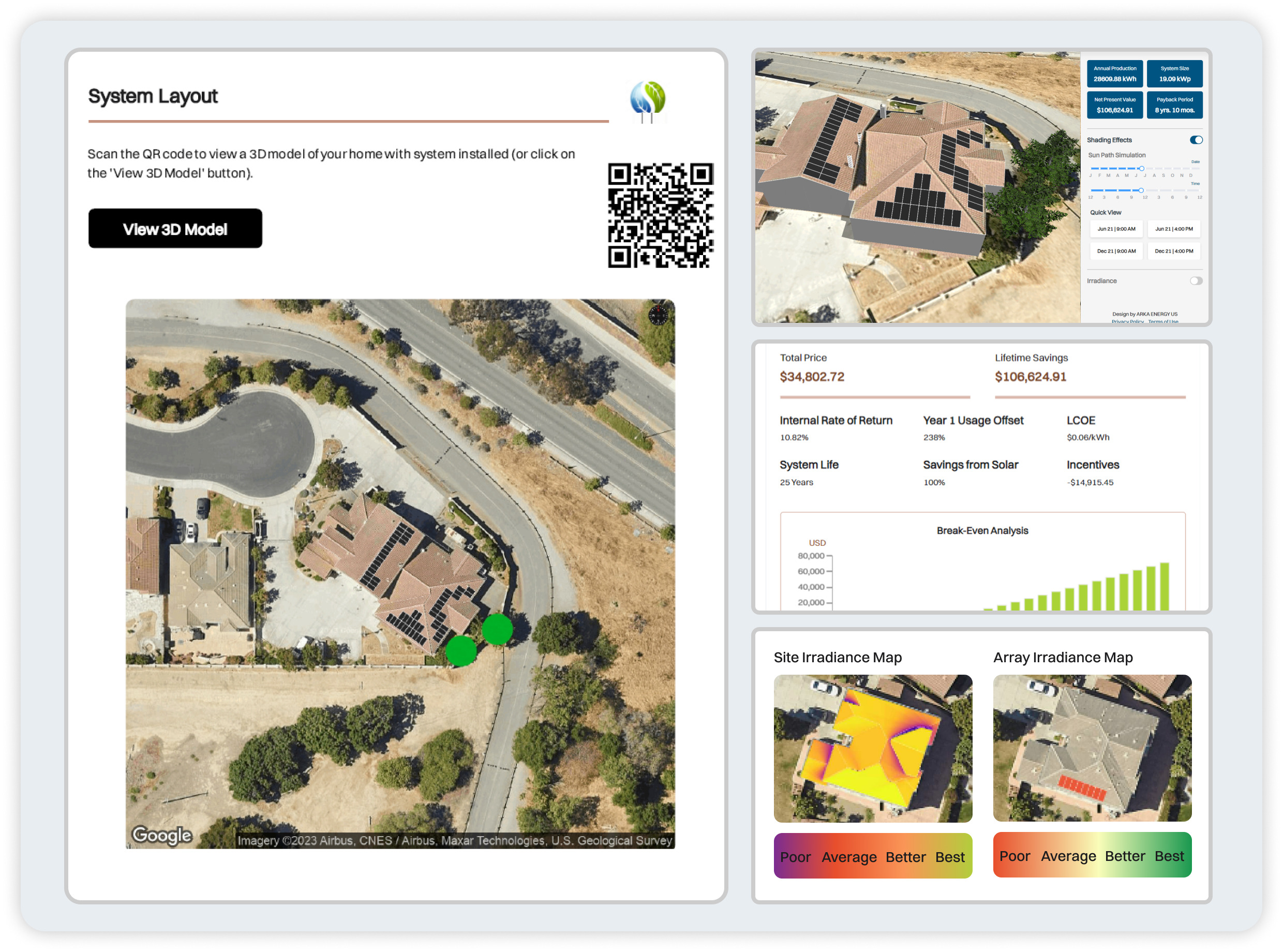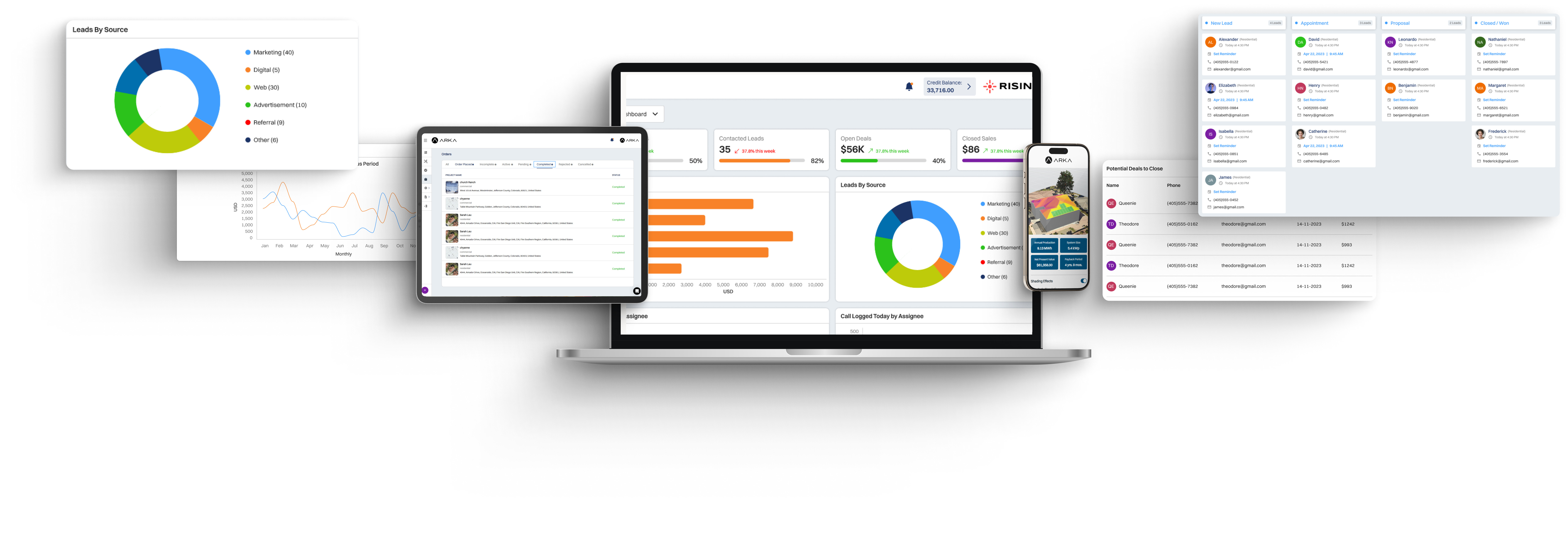
The difference between good and great solar software often comes down to one thing — the feature set. As the solar industry grows more competitive and technologically advanced, EPCs, installers, and solar consultants need tools that do more than just draw panels on a roof.
A robust solar design and proposal tool in 2025 must combine automated layout, shading analysis, interactive proposals, financial forecasting, BoM integration, team collaboration, and data connectivity — all in one streamlined platform.
In this blog, we’ll explore these seven must-have features that define modern solar design and proposal software, explain why they matter, and share practical insights on how to prioritize them for your EPC or installation business.
The solar software landscape is maturing fast. Gone are the days when having basic CAD tools and energy yield estimates was enough. In 2025, the difference between leaders and laggards will depend on feature depth and integration quality.
As solar projects grow more complex from multi-roof residential systems to large-scale commercial and hybrid setups, the need for smarter automation and data-driven accuracy has become critical. Solar designers must now factor in everything from intricate shading conditions to evolving incentive models and real-time utility rates.
The market’s evolution also means customers expect more transparency and customization. Sales teams need interactive proposals that visually communicate energy performance, ROI, and financing options in seconds. Engineering teams rely on precision modeling tools and seamless collaboration features to reduce rework.
At the same time, solar businesses are embracing AI-driven design automation, cloud-based collaboration, and API connectivity. These aren’t buzzwords anymore; they’re essential for operational efficiency.
According to Sunbase Data, the tools that will dominate the next phase of industry growth are those that integrate design, performance, and proposal in one ecosystem. This “feature arms race” is pushing platforms to expand beyond design automation into areas like financial modeling, BoM sync, and cross-platform integration.

Every successful solar design begins with accuracy and speed and that’s where automated layout and 3D modeling make a difference.
These features let designers generate roof profiles, detect tilt and azimuth, and automatically place panels with precision — all within minutes. Auto layout tools can interpret imagery or site data to calculate available roof space and adjust module placement dynamically, saving hours of manual effort.
Leading solar design software platforms now integrate AI-powered engines that automatically model rooftops and ground mounts, even factoring in complex geometry and obstructions. This not only speeds up design creation but also significantly reduces human error, leading to more reliable system performance estimates.
In contrast, manual layout still involves tracing roof boundaries, measuring angles, and placing modules by hand — all time-consuming steps that slow down proposal delivery.
According to SPOTIO and similar market studies, automated layout tools can cut design time by up to 70–75%, freeing up teams to focus on value-driven tasks like client engagement and project optimization.

Accurate shading and irradiance modeling are the backbone of reliable solar performance forecasting. You risk overpromising energy generation and underdelivering on client expectations without it.
Shading analysis tools simulate the sun’s path throughout the year and test how nearby trees, chimneys, or buildings affect solar exposure. The output irradiance maps or performance heatmaps allows engineers to optimize module placement for maximum yield.
Modern platforms, like Solargraf’s Certified Shading Engine, take this a step further with real-time shade simulation and auto roofline detection. By combining aerial imagery and LiDAR data, these tools can predict performance losses with remarkable precision.
For installers, the benefit goes beyond technical validation. Accurate shading data builds client trust, as it proves that the proposed system will meet projected savings. It also prevents costly redesigns caused by overestimated output or misjudged shade impacts.
In short, Shading and irradiance analysis is no longer optional. It’s a vital feature that ensures design integrity, improves proposal credibility, and minimizes performance risks.
The most advanced solar proposal software now serves as both a design presentation and a sales conversion tool.
An interactive proposal transforms still PDFs into dynamic ones. Homeowners can toggle between system options (e.g., “with battery” vs. “without battery”), compare costs, and view energy savings in real time.
This interactivity aids technical accuracy and customer understanding. Instead of presenting raw data, you offer an engaging, visual explanation of system performance and benefits making it easier for clients to make confident purchase decisions.
Platforms highlighted in EasySolar’s comparison of proposal software show how interactivity boosts conversion rates. The ability to customize visualizations, embed 3D system previews, and instantly adjust financial models makes proposals more persuasive and professional.
When proposals reflect live data from your design, including shading, energy output, and payback details sales cycles shorten dramatically.

Even the most technically perfect solar design must make financial sense to the client.
That’s where financial modeling and ROI forecasting come in. The best tools integrate built-in calculators that handle loan terms, tax credits, incentives, NPV, and payback periods — all automatically derived from the project data.
This capability helps sales teams answer the client’s most important question: “How much will I save?”
A study from Sunbase Data shows that financial modeling is now one of the top three decision-making features for installers choosing a design tool. It empowers consultants to present clear, data-backed payback estimates and savings over time.
An effective ROI feature can even help users calculate the software’s own payback using a formula like:
(Hours saved × hourly cost rate × number of projects) – software cost = ROI
With automated financial analysis, users can demonstrate that going solar is not just sustainable but economically smart.

A solar project doesn’t end at design approval it moves into procurement. That’s why BoM generation and procurement integration are indispensable features.
The BoM automatically compiles all required components: modules, inverters, racking systems, and accessories with accurate quantities and specifications. Some tools even connect to vendor databases or procurement software to check availability and pricing in real time.
This feature eliminates manual spreadsheet tracking and ensures that what’s designed is actually buildable. It also minimizes procurement delays and prevents order mismatches that can derail installation timelines.
According to Sunbase Data’s comparison, the best solar platforms now enable direct BoM export or supply chain sync, turning design output into actionable material lists.
For large EPCs managing multiple projects simultaneously, this is a game-changer providing traceability, standardization, and cost control across operations.

Solar teams are growing and this demands the need for seamless collaboration
The modern solar project involves lot of professions like sales reps, designers, engineers, and permitting specialists, mostly working remotely. Without a unified platform miscommunication can easily creep in.
That’s why multi-user access and collaboration tools have become essential. They allow multiple users to view, comment on, and edit projects simultaneously, with full version history and change tracking.
For EPCs who manage high design volumes require transparency so that everyone is always aligned from lead qualification to final approval. It also supports remote work environments, allowing teams to operate efficiently from anywhere.
Industry trends show a shift toward cloud-native collaboration which replaces older desktop tools with dynamic, web-based systems. This boosts speed and strengthens accountability.
In 2025, no solar tool operates in isolation. Data flows between CRMs, proposal engines, utility databases, and financial platforms must be smooth and secure.
That’s why integration and API connectivity rank as one of the top differentiators for modern solar design software.
APIs allow tools to exchange project data with platforms like Salesforce, HubSpot, or specialized solar CRMs. Integration with utility rate databases, incentive APIs, and weather data sources ensures that designs remain accurate and up to date.
Instead of re-entering data across multiple systems, a common bottleneck. Users benefit from automatic syncs that reduce administrative overhead and prevent inconsistencies.
According to Sunbase Data’s comparison, future-ready solar platforms are investing heavily in open API ecosystems to enable real-time collaboration across sales, design, and operations.
With so many features to consider, how do you decide which ones to prioritize?
Start by assessing your project scale, team structure, and growth goals. A small residential installer may not need deep procurement sync right away, while a large EPC handling commercial projects might find it indispensable.
Here’s a simple way to evaluate:
Create a feature scoring matrix to weigh benefits against implementation effort and budget. Start with your core four features and expand as your workflow matures.
Q1: Do small installers need all seven features?
Not necessarily. Smaller teams can start with core features like auto layout, shading, and proposals then scale up to advanced options like BoM and APIs as operations grow.
Q2: Are these features expensive to develop or license?
Costs vary by platform, but the long-term ROI is substantial. Automation and integrated workflows typically pay back the investment within months through time saved and higher proposal conversions.
Q3: Can software be upgraded over time?
Yes. Most modern tools are modular, letting you add or upgrade features without switching platforms.
Q4: How do APIs and integrations affect cost or complexity?
Integrations streamline workflows but may require setup or custom configurations. The payoff is significant, as they eliminate redundant manual work and improve data consistency.
.png)
These seven features form the foundation of every high-performing solar design and proposal platform in 2025. From automation to integration, each element drives efficiency, accuracy, and client satisfaction.
Arka360 brings all of these capabilities together in one seamless environment — from 3D layout and shading analysis to interactive proposals and financial modeling.
Explore how Arka360’s full suite delivers these 7 features in one platform — request a demo today.













